Estimated reading time 9 minutes, 42 seconds.
Capt Rodney Hallsworth holds a unique distinction among Royal Canadian Air Force (RCAF) long range patrol pilots. He is the first and, at present, only one qualified to fly the Boeing P-8A Poseidon.

“That’s pretty cool,” he admitted. “I feel really privileged.”
Hallsworth is on exchange with the Royal Australian Air Force (RAAF) until the end of 2021, serving as a pilot with 11 Squadron, a maritime patrol unit at RAAF Base Edinburgh near Adelaide. Unique as his qualification is among Canadian pilots, it’s also relatively new for Australian pilots. Hallsworth’s exchange coincides with the introduction into service of the multi-mission maritime aircraft, which are replacing the Lockheed Martin AP-3C Orion.
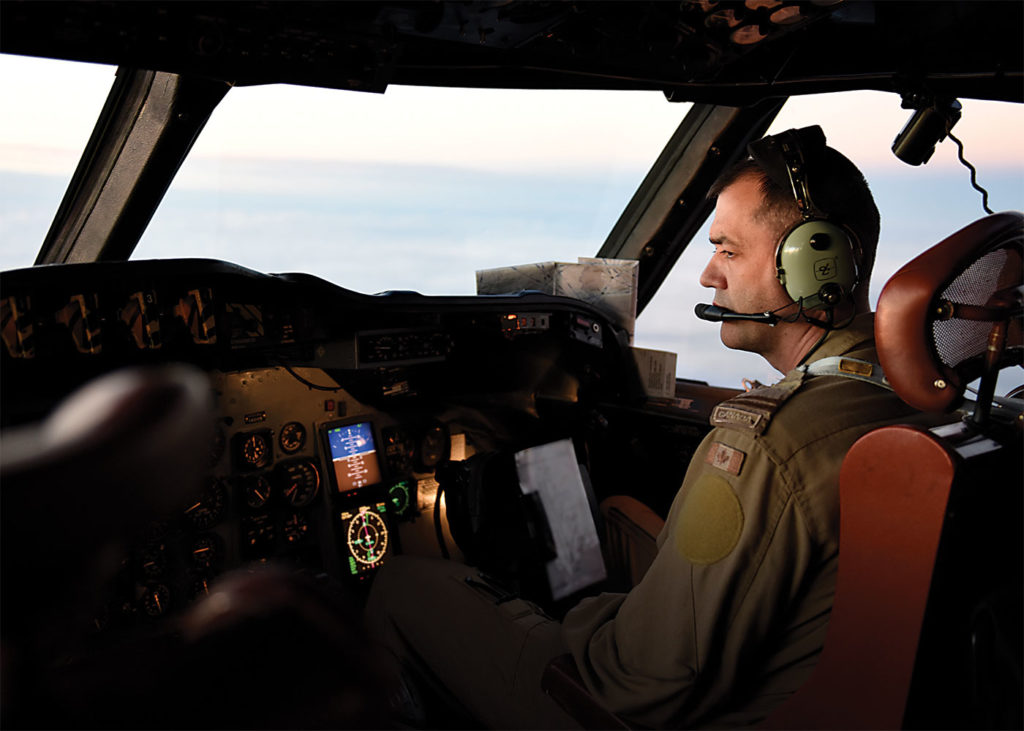
The RAAF is still in the initial operating phase of the new capability. The first of 12 P-8s, a militarized variant of the Boeing 737-800ERX, was delivered in November 2016. The last arrived at the squadron in December 2019, and the Australian government has indicated an interest in three more.
While the Poseidon has been deployed on its first international operation in the Persian Gulf, the RAAF is still introducing certain functions and refining the tactics, techniques and procedures for maximizing its array of enhanced sensors, weapons and mission systems. For the Canadian captain, it’s a rare front row seat to observe and learn as the P-8 progresses rapidly to full operating capability.
“It is definitely a transition and learning process,” said Hallsworth.
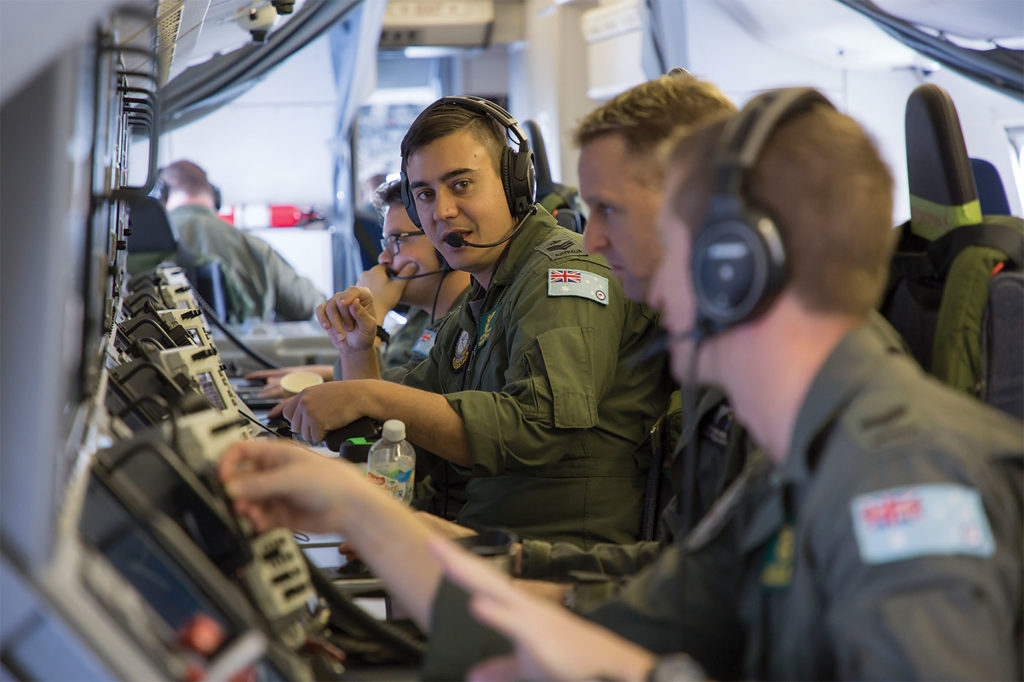
He laughed when ask if that experience might make him a future subject matter expert in the Directorate of Air Requirements as the RCAF considers options for a $1.5 billion Canadian Multi-Mission Aircraft project to replace the CP-140 Aurora, a variant of the Lockheed Martin P-3 slated to retire in the early 2030s. “Stranger things have happened,” he chuckled.
But with the Canadian long-range patrol community in the midst of a “get well” program to reinvigorate its anti-submarine warfare (ASW) capabilities after almost a decade of intelligence, surveillance and reconnaissance (ISR) operations overland, the view from the P-8 cockpit is an opportunity to observe and pick up ideas that might be applicable for the RCAF. From what he has seen so far, the RAAF has not experienced a similar deterioration of ASW skill sets. “I would suggest that out of necessity, they have always retained that strong ASW capability in the maritime patrol community.”
CAREER INSURANCE
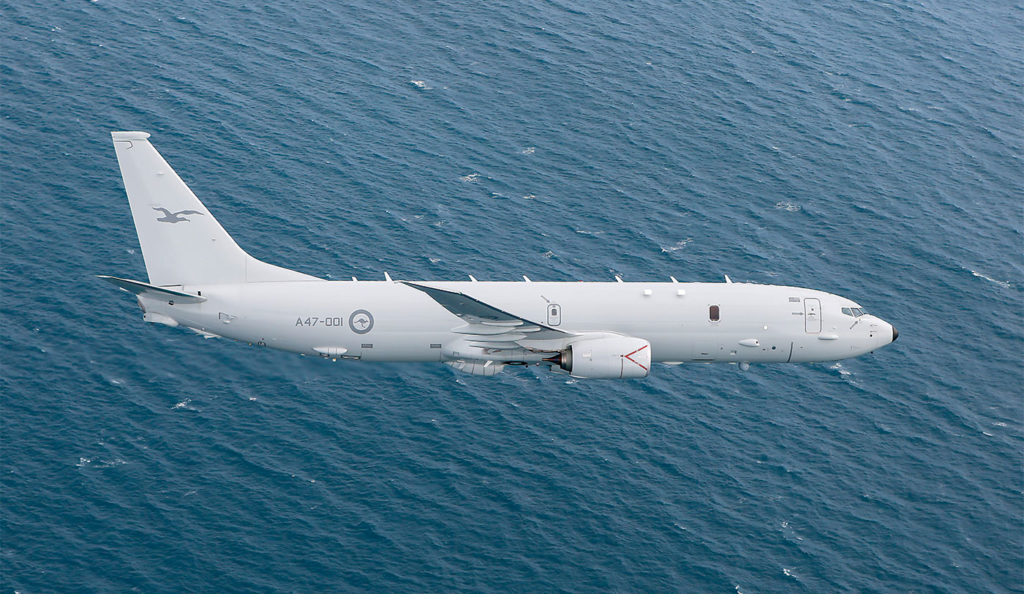
The Air Force wasn’t Hallsworth’s initial career choice. Born in the United Kingdom, he grew up in Brampton, Ont., and entered the insurance profession with several prominent companies after graduating from the University of Toronto.
But as the Canadian mission in Afghanistan moved from Kabul to the Taliban heartland of Kandahar in late 2005 and the evening newscasts filled with reports from ground operations in 2006, he felt compelled to make a change.
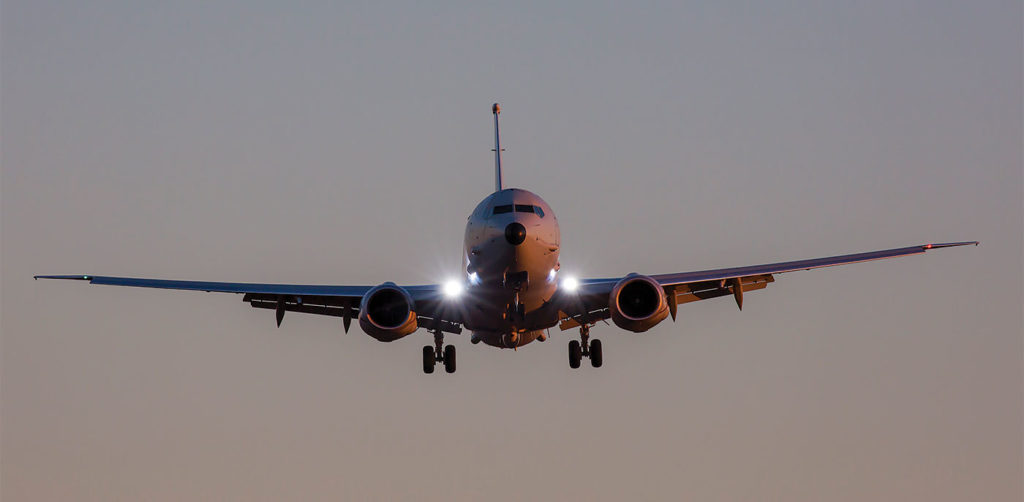
“Although I had a stable and satisfying career, I suppose I wanted to find a way to give back to the country that had been good to me and my family,” he said. “Serving in the military was the way I chose to do that.”
He joined the RCAF that year and received his wings in 2011 following completion of the multi-engine pilot training program at 3 Canadian Forces Flying Training School in Portage la Prairie, Man. and 2 CFFTS in Moose Jaw, Sask., on the Grob 120-A, CT-156 Harvard and Raytheon King Air C-90B.
After qualifying on the CP-140 Aurora, Hallsworth was posted to 405 Long Range Patrol Squadron at 14 Wing Greenwood, N.S. He did two tours in mid-2015 and early 2016 on Operation Impact in the Middle East, an effort that engrossed the long-range patrol community for more than three years in overland ISR missions and included 881 sorties.
After his last tour, he was posted to 404 Long Range Patrol and Training Squadron in 2016 as an instructor pilot. When the opportunity to fly the P-8 came up in 2018, he jumped at the chance. “I was lucky to be in the right place in the right time,” he acknowledged.
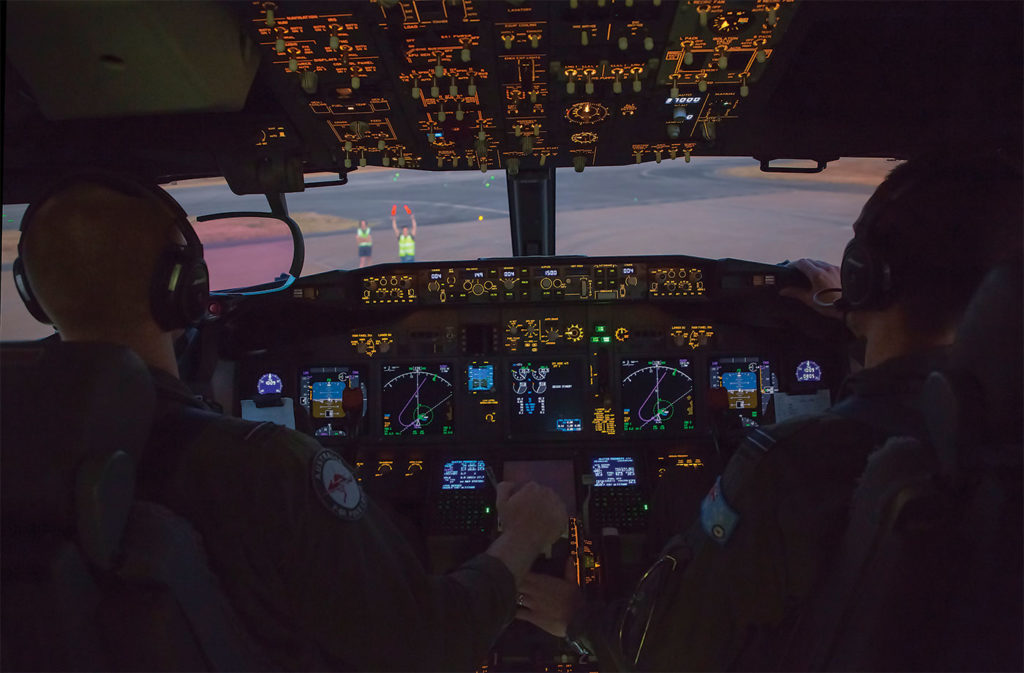
404 Squadron and 10 Squadron, until recently a similar maritime unit at RAAF Base Edinburgh, have long maintained a pilot exchange program. In May 2019, however, 10 Squadron was transferred to 42 Wing as electronic warfare (EW) specialists still operating two AP-3C EW Orions. As a result, Hallsworth was placed with 11 Squadron while his Australian counterpart flies the CP-140 with 405 Squadron.
As one of the newer pilots on squadron, Hallsworth’s flying has so far been from the co-pilot’s seat and mostly in exercises with the RAAF and Royal Australian Navy. He completed six months of conversion training in July 2019 and, despite a brief delay due to the coronavirus pandemic, has set his sights on “working up to maritime captain.”
While that will undoubtedly mean larger exercises with the United States and other allies, it could also involve an operational deployment. Since 2001, Australia has supported the U.S.-led coalition in Afghanistan and the Middle East with deployments of AP-3C Orions, F/A-18F Super Hornets and F/18A Hornets, as well as the E-7A Wedgetail airborne early warning and control aircraft and KC-30A multi-role tanker transport. The P-8 Poseidon was deployed in 2019 to support maritime security operations in the Arabian Sea and Persian Gulf.
DIFFERENT AIRCRAFT, SIMILAR MISSIONS
Hallsworth might be flying a different aircraft in a different hemisphere, but the mission sets and capabilities of the P-8 and CP-140 are similar, despite an almost 40-year difference in age. Though he could not share the specifics about aircraft systems for security reasons, he noted that both fleets have the same strategic missions of ASW, anti-surface warfare and maritime surveillance.

Under the Aurora Incremental Modernization Project and a structural life extension program, the CP-140 has significantly improved its sensor and data management systems. Hallsworth flew the interim Block IV aircraft on Op Impact that included a beyond-line-of-sight satellite communications system for high speed data streaming, ground-mapping radar, enhanced electro-optical and infrared cameras, and electronic emissions collection and onboard analytical capacity.
“Without getting into too many details, I would say the capabilities are on par with each other,” he said. “Both have the same core sensor suite. The differences perhaps lie in human-machine interface.” Even with a larger airframe, the newer P-8 can operate with a slightly smaller aircrew.
No matter the dissimilarities, “what never gets old, whether flying the Aurora or Poseidon, is flying low level over the water, passing a ship in the middle of the ocean,” he said. “That’s always exciting.”
The exchange of officers has been a regular feature of the RCAF and RAAF relationship for decades. Through embeds in headquarters and on aircraft types, the two forces have shared operational knowledge, doctrine and tactics, techniques and procedures.
The exchanges are also an opportunity to experience a different military culture and way of life. That has been particularly important to Hallsworth. He and his wife, Elizabeth, arrived in Adelaide in November 2018 with two young children, Oscar, 6, and Millie, 3, and they made the most of what southern Australia has to offer in the summer, from camping and swimming to the many wineries and breweries.
“Luckily for us, the kids are at a good age for this kind of move. We are really enjoying the lifestyle in Australia.”


Fascinating story! Congrats to Capt Hallsworth and I hope he and his family enjoy their time in Australia. It gives me pause to consider how much ASW (sorry, that’s what is will always be to me) has evolved. I cut my Maritime Patrol teeth with VP 407 in the venerable CP-107 Argus (millions of rivets flying in loose formation over the Atlantic spreading AVGAS and oil all over everything). As a Routine Navigator waiting for my turn on the Tac-Table or Jezz station, I would take Sun/Star/Moon shots, and “drift” readings to assess how the old “ball resolver” ANTAC was doing keeping track of where we were – Loran-A readings sometimes helped but at night (which it always seem to be) it could be a very tricky process. Making “radar landfall” was always cause for a sigh of relief (mostly – although sometimes embarrassment). Eventually, GPS took care of all that and closed the book on the classic Navigator.
The new aircraft looks sleek and exciting to fly – I still can remember the feeling of exhilaration during the take-off roll and reflect on how much I enjoyed my days (and nights) spent “on-patrol”
BZ!!
Australia views Defense as critical to its national interest. Canadian does not. Our current government doesn’t even see Canada as a nation! Therefore, what little is left of the Military will either just be left to atrophy or its budget will be slashed to finance the social engineering projects the Trudeauites hold dear, supposedly. P8s, F35s, new submarines, and Type 26 Frigates just aren’t going to happen. Not a one of them! These projects will simply be abandoned or decisions will be kicked so far down the road that they may as well be abandoned. Canadian officers know this and that is why it has been fairly routine for some to leave and join up with the Australians. There they are valued for their skills and professionalism.
Canada ceeded its soverignity long before the current govt came to power.
Really sad that we didn’t use our own C-series for this role in Canada. Nice to have a made in Canada solution. The efficiency and fuel burn differential would have really been something.